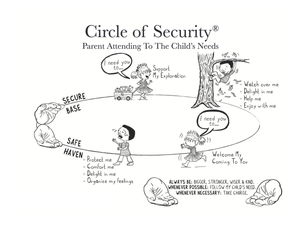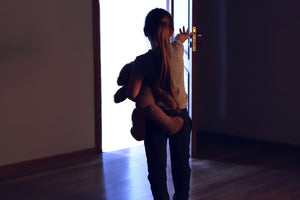Tips For Toddler Sleep Problems

It is quite common for toddlers to wake during the night or to need additional comfort to go to sleep. In Western culture we are quick to want babies to sleep during the night. Many parents feel as if they have failed if their toddler is still requiring comfort or needing help to go back to sleep at night time. However, even many adults do not sleep through the night. We wake, toss and turn and hopefully fall back to sleep! Babies and children are no different, although as you may have become aware, some need that addition comfort or reassurance to go back to sleep by themselves.
The reasons why toddlers don’t sleep are as varied as the personalities of the toddlers.
Many parents however, say their toddler has never really been a ‘good’ sleeper, by that they mean the toddler, even as an infant, struggled to sleep, or woke frequent overnight even when they were not hungry. Other toddlers may have a clearly identifiable catalyst to their wakefulness or sleep resistance, the most common triggers are; moving house, a new baby or being cared for by someone new as parents return to work. Whatever the cause, a sensitive and responsive approach to addressing toddler sleep struggles means the toddlers experience can be respected while they are guided to a new way of drifting to sleep. Contrary to popular belief, toddlers just do not need to cry and be distressed for extended periods, to learn that sleep is okay.
Before considering any dramatic ‘sleep training programs’, consider trying some of the following simple tips to help shift your toddler into a better head space for sleep. These basic ideas have helped parents to help their toddler to find sleep, without any ‘training’ and ‘quick fixes’ that may not be considerate of the individual toddler and their reasons for the sleep struggles.
Avoid Overtiredness
Overtired toddlers, and adults for that matter, have difficulty calming for sleep, so it is best to try to avoid over tiredness whenever possible. When a toddler looks tired, according to their neurological system, it is sleep time. Try to get your toddler into bed when the tired signs begin as it will be easier for your toddler’s brain to move into sleep if not in an overtired state. Late tired signs such as yawning and crying leave a small window of opportunity for drifting to sleep before your toddler is totally overtired and begins to ‘wind up’ again.
Look at the Environment
Provide an environment that is conducive to sleep. Quite voices, dim lighting and reduced stimulation can all help to calm the active toddler brain. A cuddle and a book can often be calming, as can a gentle swaying dance or a slow, rhythmical nursery rhyme or song. Active, lively toddlers need to calm down before sleep and they WILL need help to achieve this. Calming time can be a matter of a few minutes or some may need more, ranging from 10 to 30 minutes.
Predictability
Offer a predictable (but flexible) set of experiences that are associated with sleep so your toddler can understand what to expect. Anticipation can be a great way to move the toddler into preparing for sleep by letting the pattern be the reminder that bed time is approaching.
Offer Choices
Allow your toddler some ‘choices’ so they feel some control of their lives. Because of this developing need for control, it is best to offer some choices in the sleep preparation time, rather than offering choices overnight, because one of those choices will be not to sleep now, and the other will be … not to sleep now. In the preparation for bed time allowing choice from two options is plenty. Toddlers can become overwhelmed quite quickly by too many choices. Offer easy choices such as; socks on or off? The zoo book or the sheep book?, rather than choices about things that will inevitably result in resistance.
Try Role Play
Role play is a great way of getting ideas happening with this age group. Nothing major, just feed teddy together; have a picnic or something with teddy on the veranda or lounge room rug, then prepare teddy for a sleep. Guide your toddler gently, but allow them to explore and talk with Ted and to action the events. You may suggest that ‘Ted’ might feel a bit lonely at sleep time and ask your toddler what might help ‘Ted’, maybe a special toy might help keep Ted company or an extra cuddle.
Talk about Sleep Time
Chat about sleep time expectations during the day, not all the time, but be sure the topic has been covered so lengthy discussion at sleep time isn’t necessary. Toddlers are delay tactics masters, so rather than entering into debates or lengthy discussions, it is best to be able to say, ‘shh we will talk in the morning, sleep time now’. As the adult you are the calm, wise and kind one who makes decisions for the health of the child, so sleep time needs to happen even if your toddler thinks differently. Sleep time can be gentle and loving, it doesn’t have to be distress filled and challenging. Sometimes love and kindness can go out the window in the frantic struggle to get toddler’s to sleep. Slow deep breaths … remember they are not meaning to be difficult, they just really prefer your company rather than sleep.
Sleep Associations
Think about what your toddler associates with how sleep happens, as that may be what they expect to experience when they wake at the end of one sleep cycle, to help them move into the next sleep cycle. It is a huge and exhausting commitment to support your toddler back to sleep every 45-50 minutes when one sleep cycle ends and another is to begin. It is better for both parent and toddler that your toddler to be able to move into another sleep cycle without needing assistance from others throughout the night.
Breastfeeding to Sleep
Some toddlers may rely on breastfeeding to sleep, and we know the World Health Organisation (WHO) emphasizes the importance of breastfeeding to two years of age or beyond, so it is beneficial to promote and facilitate breastfeeding. Some toddlers, however, rely on feeding to drift to sleep which may, become difficult to sustain. Simply let your toddler feed until almost asleep so they experience actually drifting to sleep in their cot or bed. That way the experience is more able to be replicated independently at the end of each sleep cycle.
Creating Independent Sleep Associations
Independent sleep associations are easy to create and they help struggling toddlers, by giving little cues that it is sleep time. A less brightened area, reduced activity and some background sounds (white noise is brilliant for sleeping brain waves), can all be replicated with or without you. These associations that are independent of you only need to happen until your toddler has mastered the art of drifting to sleep and returning to sleep effortlessly. So don’t fear, they won’t need white noise when they are adolescents.
Help with looking after your Toddler
As your baby develops into a toddler, they become increasingly aware of the world around them.
While this can be an exciting time for your toddler, it can also be challenging and frustrating for you both, as they begin to exert their independence and insist on doing things on their own.
The Guide to Toddlers is the perfect place to learn all of the skills and behaviours of your toddler and gentle and effective ways to communicate with them.
Many parents have reduced sleep when a new baby arrives. The Safe Sleep Space website has a variety of resources and supports to provide tips and advice on how to assist your baby with sleep. You can also book a phone consultation to speak with a Sleep Consultant.
Other blog posts you will find helpful:
When is it time to get help for my child's sleeping?
Coping with toddler nightmares and night terrors








